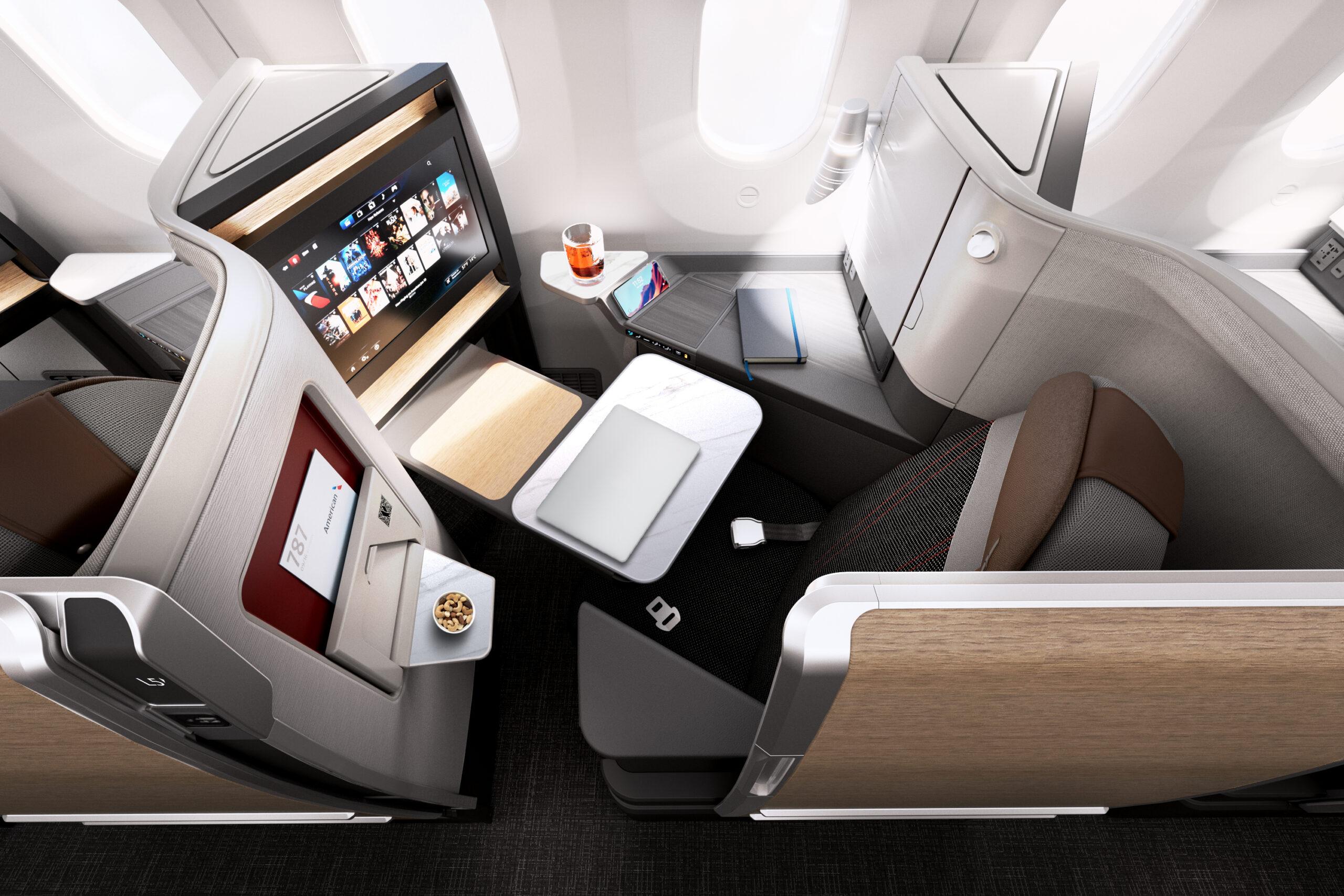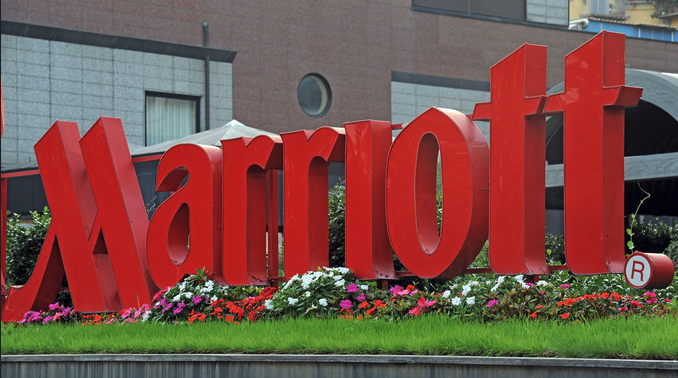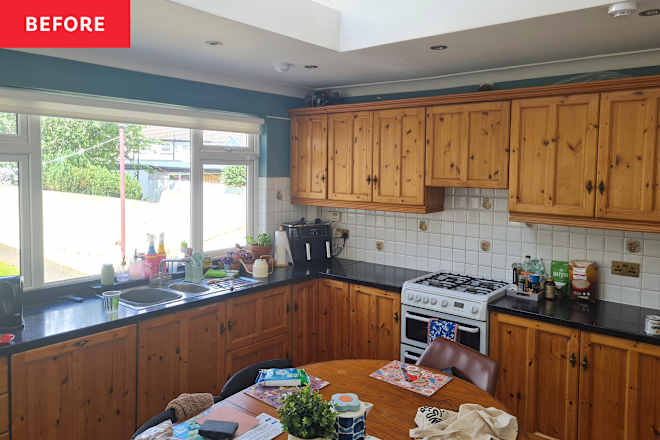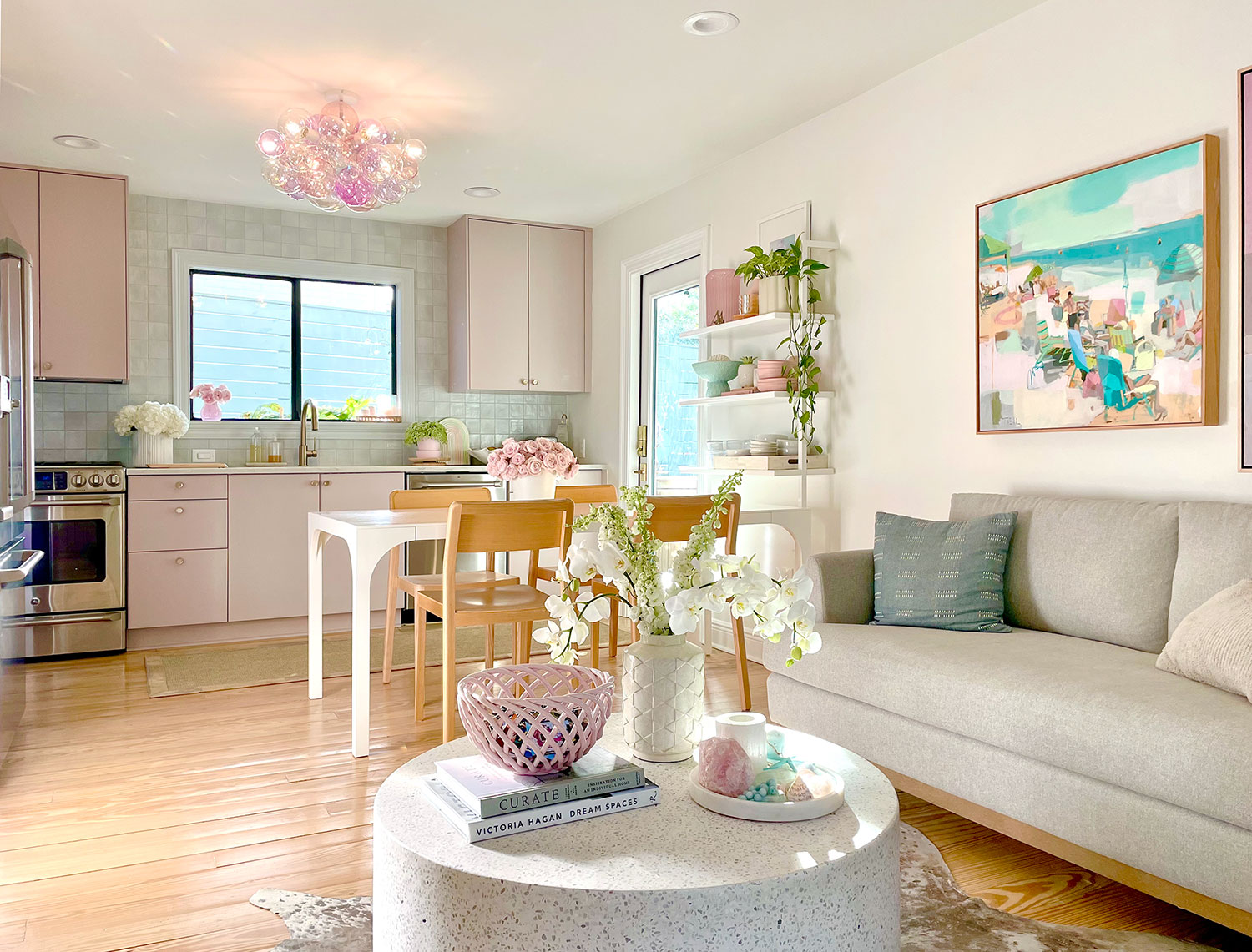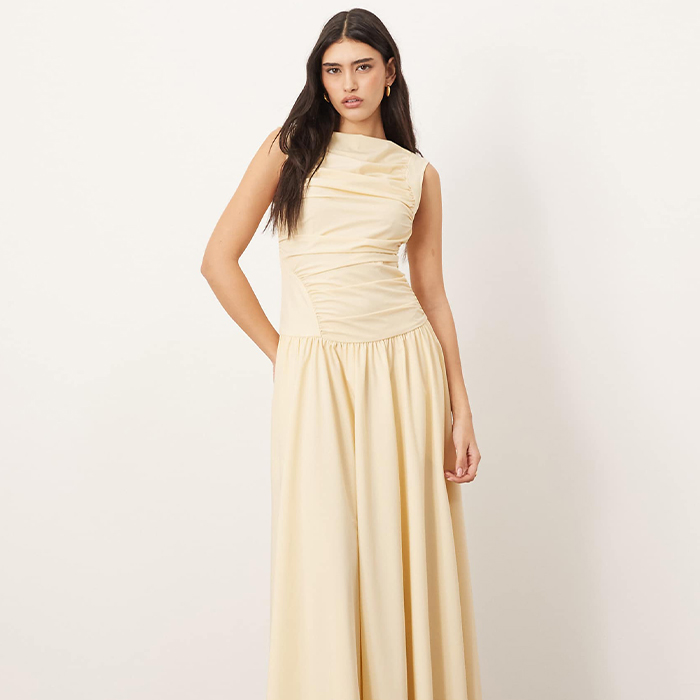Dezeen's A to Z of art deco
Today marks 100 years since the opening of the Paris exposition that introduced art deco to the world. Drawing on our recent Art Deco Centenary series, this handy A to Z guide provides an overview of the lost-but-loved style. On 29 April 1925, the Exposition Internationale des Arts Décoratifs et Industriels Modernes began in Paris, The post Dezeen's A to Z of art deco appeared first on Dezeen.


Today marks 100 years since the opening of the Paris exposition that introduced art deco to the world. Drawing on our recent Art Deco Centenary series, this handy A to Z guide provides an overview of the lost-but-loved style.
On 29 April 1925, the Exposition Internationale des Arts Décoratifs et Industriels Modernes began in Paris, catapulting the design style now recognised as art deco onto the global stage.
Art deco was the defining style of the 1920s and 30s, touching everything from architecture to advertising. It burned brightly during those decades before fizzling out with the onset of world war two, but remains popular with the public today.
Read on for Dezeen's A to Z of art deco:

A is for Chrysler Airflow
Streamlined cars were an important manifestation of art deco, and the Chrysler Airflow was undoubtedly among the most significant.
Launched in 1934 when boxy cars with vertical front grilles were the norm, it was the first production car designed in a wind tunnel.
Despite capturing the public's imagination – with Chrysler boasting the Airflow was "America's most talked-about car" – it was a commercial failure and taken out of production in 1937.

B is for bakelite
Like many design movements, art deco was heavily influenced by the advent of new technologies and materials.
One of the materials most closely associated with the style is polyoxybenzylmethyleneglycolanhydride – more commonly known as bakelite. The world's first synthetic plastic, it was created by chemist Leo Hendrik Baekeland in the US in 1907 from a combination of compounds derived from coal tar and methanol.
Rigid, mouldable, non-conductive and heat-resistant, it was advertised as the "material of 1,000 uses", and began to filter into homes throughout the 1920s in a vast range of products.
The most famous bakelite objects are the 1934 Type 232 telephone and radios made by manufacturers such as Philco, General Electric and Remler.

C is for Chrysler Building
Chrysler's role in the art deco story did not begin and end with its cars. Its founder, Walter Chrysler, also commissioned what is probably the world's most archetypically art deco building – the Chrysler Building in New York City.
Designed by William Van Alen and completed in 1930, it was the world's first supertall skyscraper at 319 metres tall.
Its exterior features a stainless-steel decorative crown and large metal gargoyles resembling Chrysler hood ornaments, while the interior is awash with lavish materials such as black granite and colourful marble.

D is for Jean Dunand
Swiss-French artist and interior designer Jean Dunand is particularly remembered for his lacquerwork – a common feature of art deco objects and interiors.
His work appeared at the 1925 expo in Paris, for which he creating a smoking room decorated entirely in lacquered panels, as well as on the art deco ocean liner the SS Normandie.
Dunand specialised in making large decorative screens incorporating exuberant designs and precious materials, such as Fortissimo (pictured), made from lacquered wood, eggshell, mother-of-pearl and gold leaf.

E is for Erté
Art deco was never based on an intellectual theory, so its core characteristics are notoriously difficult to define.
However, no individual did more to establish the essential vibe of art deco than the Russian-French artist and fashion designer Romain de Tirtoff, better known as Erté.
Throughout the 1910s and 20s, Erté's costumes and illustrations – particularly his hundreds of covers for Harper's Bazaar – displayed an opulent, luxurious vision of modernity that borrowed heavily from ancient and foreign cultures.

F is for fonts
More than any other design style, art deco is associated with a clutch of distinctive typefaces, many of which started to emerge across various forms of advertising during the '20s and '30s.
A particularly important figure in this space was the Ukrainian-born French graphic designer Cassandre, who created the Bifur, Acier Noir and Peignot (pictured) typefaces.
Online typography archive Fonts In Use has compiled an extensive gallery of typefaces associated with art deco.

G is for The Great Gatsby
Art deco formed the backdrop to significant societal shifts during the '20s and '30s – technological advances, boom-and-bust economics and Jazz Age culture.
Nowhere is the hedonism of the time captured more vividly than in F Scott Fitzgerald's seminal 1925 novel The Great Gatsby, which follows the romantic obsessions of a mysterious millionaire in the habit of throwing huge parties.
Almost as significant as the text itself was the book's first-edition cover art – Celestial Eyes, by Spanish painter Francis Cugat (pictured).
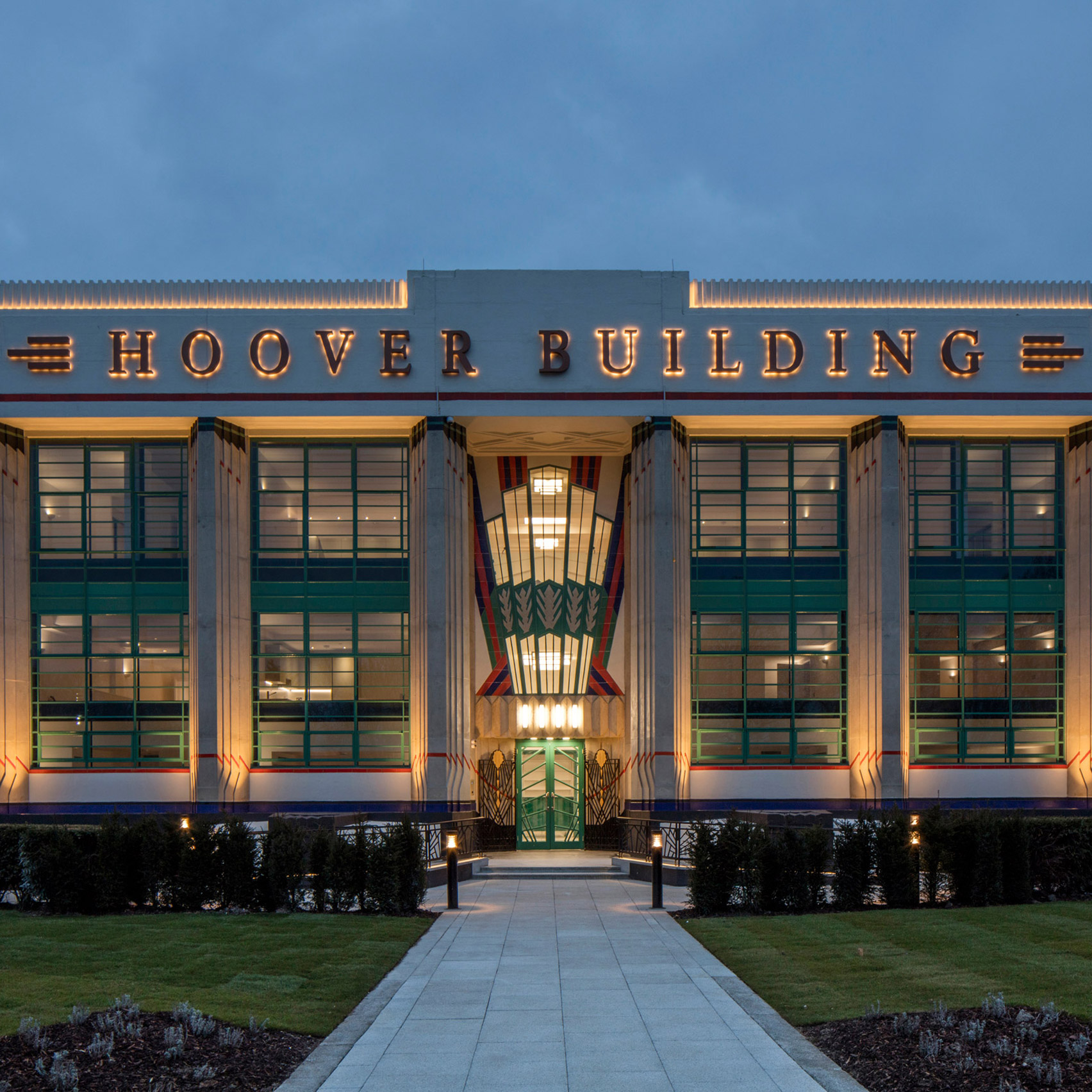
H is for Hoover Building
The Hoover Building, in Perivale, west London, is the UK's eminent art deco building. Like the Chrysler Building, it is an emblem of the architectural ambitions of industry during the early 1930s.
Designed by Wallis, Gilbert & Partners, it opened in 1931 as a factory for vacuum-cleaner manufacturer the Hoover Company.
After falling into an unloved state during the 1990s and 2000s, when it was used as a supermarket, it was renovated into apartments in 2018.

I is for ivory
In its early phase, art deco meant luxury – and that meant luxury materials, not all of which designers would be comfortable using today.
Ivory was used for its insulating properties in tea and coffee sets, or as an inlay in furniture pieces such as Émile-Jacques Ruhlmann's État d'Angle corner cabinet (pictured). It added the touch of exoticism that designers often craved, as well as contrasting with the rich, dark woods that were popular at the time, such as ebony and rosewood.
By the 1930s such precious materials became less common, as art deco products were increasingly geared towards mass production.

J is for Betty Joel
Betty Joel is likely the most successful designer you've never heard of. Producing furniture, homeware, textiles, interiors and radios, she achieved critical acclaim and commercial popularity, becoming a prominent voice on Britain's art deco scene during her short career.
However, she suddenly turned her back on design shortly before the second world war never to return, and her legacy has since been largely forgotten.

K is for Kem Weber
Many designers dabbled in art deco before moving on to other styles, and Kem Weber is a prime example. The German-American furniture and industrial designer became more aligned with modernism later in his career, embracing the tubular steel loved by Marcel Breuer.
But Weber was a key figure in the emergence of streamlined furniture, and his most famous design is decidedly art deco.
Launched in 1935, the Airline chair could be packaged into a thin box and assembled at home using simple tools, laying the foundations for the flat-pack era.

L is for René Lalique
By the time art deco became a significant trend in the 1920s, French jeweller and glass artist René Lalique had already been designing in different modes for well over 40 years.
Nevertheless, he became a leading light of the emerging style, and his fingerprints appeared on icons such as the Orient Express and the SS Normandie ocean liner.
He played a major role at the 1925 exposition in Paris, designing a pavilion and the 15-metre-tall Luminous Fountain (pictured), as well as sculptures for main entrance. Eighty years on from his death, Lalique's eponymous glassware brand is still going strong.

M is for Miami Beach
Miami Beach claims to boast the highest concentration of art deco buildings of anywhere in the world. Its Art Deco Historic District, in South Beach, has more than 800 buildings in the style – most of which have been well preserved thanks to the efforts of the Miami Design Preservation League.
Particularly eye-catching are the hotels on Ocean Drive, two of which we included in a roundup of America's most significant art deco buildings.
The area is particularly strong on later examples of art deco architecture, with some of the only buildings constructed in the style after the outbreak of world war two.

N is for neon
Many of the hotels along the aforementioned Ocean Drive are illuminated at night by colourful neon signs.
After its invention by French engineer Georges Claude in 1910, this technology began to enter the built environment in Paris over the following decade – the furnace in which art deco was being forged – particularly on advertising boards and cultural venues. Combining exciting, modern tech with frivolity and exuberance, it was the perfect companion for the style.
Neon lighting was adopted enthusiastically in the United States during the 1920s, especially in New York City, where it festoons one of the world's most famous art deco buildings – Radio City Music Hall (pictured).

O is for orientalism
In the 1920s and '30s, most people would likely have understood the term "orientalism" to refer to an artistic and cultural fascination with the Middle East and Far East.
This was certainly true for many art deco designers, who craved a sense of the exotic. From the beginning, art deco was closely associated with motifs lifted from Byzantine, Chinese and Japanese traditions, as well as many more besides. The discovery of Tutankhamun's tomb in 1922 led to a particular obsession with ancient Egypt.
Since the publication of Edward Said's 1978 book of the same name, orientalism has taken on more negative connotations of imperialism.

P is for picture palaces
In his book The World of Art Deco, British journalist Bevis Hillier, widely credited with popularising the term "art deco" and pioneering interest in the style, wrote that cinemas built in the '20s and '30s showed art deco "in its fully realised form, functional to the extent that any cinema has to be, but also giving scope for the farthest indulgence of the designer's taste".
These two decades were a boom period for cinemas following developments in filming and projection technology, but before the advent of television lessened the paying public's desire to leave their homes.
Tens of thousands were built in the US alone, and as Hillier suggests, they were often highly opulent in design – leading them to be known as picture palaces, or movie palaces. Among many notable examples are the Paramount Theatre in Oakland, California (pictured) and the Egypt-themed Le Louxor in Paris.

Q is for RMS Queen Mary
The '30s were the final years of the ocean liner era, before advancements in aviation during the second world war meant ships were no longer the best way of traversing the globe.
Liners were a form of transport, but they were also luxury experiences for those able to afford a first-class ticket. Major shipping companies competed to build the most opulent vessels, and art deco offered the ideal flavour of glamour.
Among the most significant examples was the RMS Queen Mary, completed by the Cunard Line in 1936. Designed by Arthur Joseph Davis and Benjamin Wistar Morris, her interiors included the distinctly art deco observation bar (pictured) and a mural in the main dining room depicting a map of the liner's route across the Atlantic, complete with a crystal model of the ship tracking its progress.
However, the Queen Mary was outdone in art deco extravagance by her rival, the French vessel SS Normandie.

R is for Émile-Jacques Ruhlmann
French designer Émile-Jacques Ruhlmann was one of art deco's most towering figures. He developed a series of rich veneered cabinets in the late 1910s that were early manifestations of the style, and his Hotel d'un Collectionneur pavilion was the star attraction of the 1925 Paris expo.
Ruhlmann was an unapologetic elitist who aimed for the highest possible quality. It is said that at the height of his renown, a bed from his atelier cost more than a large house.
One of his later designs before his untimely death in 1933 was the grand salon of the SS Normandie, mentioned above.

S is for streamlining
By the mid-1930s, art deco became less about lavishness and more associated with swooping curves, particularly in the US.
This shift was brought about by two factors – the economic reality of the Great Depression necessitating more restrained design, and an increasing interest in aerodynamics thanks to vehicles like the Chrysler Airflow and SS Normandie.
Buildings and furniture started to take on rounded edges and smooth surfaces in a variety of art deco known as streamline moderne.

T is for Tiong Bahru
Art deco has been described as the first international design style because of the way it spread around the world.
It has a habit of cropping up in unexpected places, such as the Singapore neighbourhood of Tiong Bahru. The area is home to Singapore's oldest public housing estate, with streamlined architecture characterised by curving facades, porthole windows and sweeping horizontal lines.
As part of our Art Deco Centenary series we rounded up nine surprising art deco architecture hotspots, from Montevideo to Manila.

U is for London Underground
London's tube network expanded significantly during the '20s and '30s. Many new stations were built, some of which had distinctly art deco leanings – especially those by architect Charles Holden. Uxbridge station (pictured) is a prime example, crowned by sculptures depicting winged wheels and with a stained-glass window in the ticket hall.
Perhaps more significantly, Holden also designed the headquarters for the Underground's main operating company at 55 Broadway in central London. Featuring distinctive sculptures and reliefs on its facade, it was the tallest office building in the city when it opened in 1931.
The trains themselves around this time also arguably demonstrated the influences of art deco in their light fittings and moquette seating, but it was in the large number of posters commissioned by London Underground during this period that the style really came through.

V is for vitrolite
Streamlined design requires streamlined materials, and pigmented structural glass became an essential tool in later art deco.
Structural glass that had applications as a less expensive alternative to marble first emerged in 1900 and over the next few decades its manufacture ramped up, with a wide range of colours eventually available. It was used in several famous art deco buildings, such as in the dining room of the Chrysler Building's Cloud Club, and on the Daily Express Building in London (pictured).
According to Jeffrey L Meikle's book Twentieth Century Limited, the top supplier of structural glass was Pittsburgh Plate Glass, maker of Carrara. However, the product of its rival, the Vitrolite Company, is now much more widely remembered.
Pigmented structural glass fell out of favour by the 1950s as cheaper, more durable materials such as porcelain and enamel sheeting were developed.

W is for Works Progress Administration
As part of Franklin D Roosevelt's New Deal reforms aimed at reviving the US economy following the Great Depression, the Works Progress Administration (WPA) was established in 1935 to construct public buildings and infrastructure.
In a short space of time the WPA delivered tens of thousands of buildings, having a significant impact on America's architectural landscape – including the transition to a more restrained style. Among its most famous buildings is the Griffith Observatory in Los Angeles, which we included in our list of the most notable art deco buildings in the US.
The WPA also commissioned artworks, including a number of art deco murals.

X is for Exposition Internationale des Arts Décoratifs
The term "art deco" was not coined until the 1960s, but it comes from the name of the event that kicked off 100 years ago today – the Exposition Internationale des Arts Décoratifs et Industriels Modernes.
Running in central Paris from April to October 1925, the expo was organised to assert the dominance of French design but ended up having much wider significance.
It was a huge success, with 15,000 exhibitors from more than 20 countries participating and an estimated 16 million visitors – introducing what we now recognise as art deco to a vast global audience through a series of pavilions and installations and heavily influencing a generation of designers.

Y is for Joseph Younger
American architect Joseph Younger is best known for designing the Kennedy-Warren Apartment Building, arguably Washington DC's most important art deco landmark and also in Dezeen's list of significant US buildings in the style.
Its facade features motifs informed by Aztec culture and a curving aluminium canopy lined with small decorative arches.
The main building was completed in 1931, and Younger died by suicide only a year later.

Z is for ziggurats
Ziggurat forms are among the most common recurring motifs in art deco, particularly architecture. The best known example is likely the Empire State Building in New York City (pictured), with its receding tiers.
The use of ziggurats was partly the result of designers' interest in Mesoamerica, and the famous stepped-pyramid Mayan temples.
But also, it was the result of regulation. In 1916, New York City passed a zoning resolution that required setbacks on buildings above certain heights, in order to prevent skyscrapers from blocking sunlight from reaching street level. The ziggurat look caught on and appeared on buildings around the world.

Art Deco Centenary
This article is part of Dezeen's Art Deco Centenary series, which explores art deco architecture and design 100 years on from the "arts décoratifs" exposition in Paris that later gave the style its name.
The post Dezeen's A to Z of art deco appeared first on Dezeen.

















































